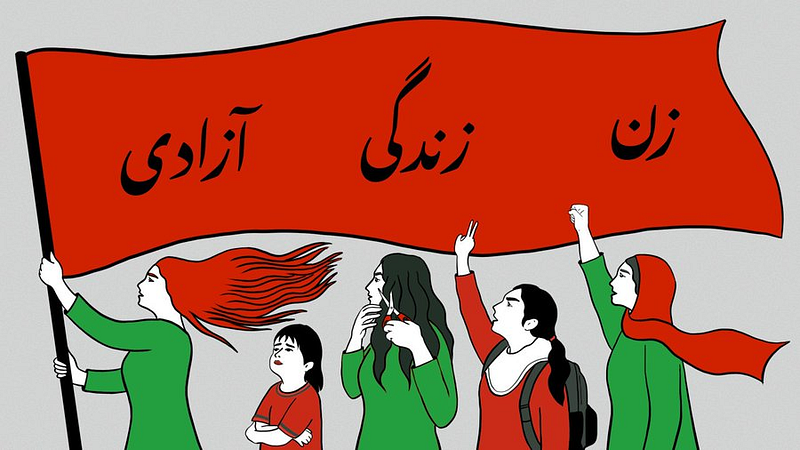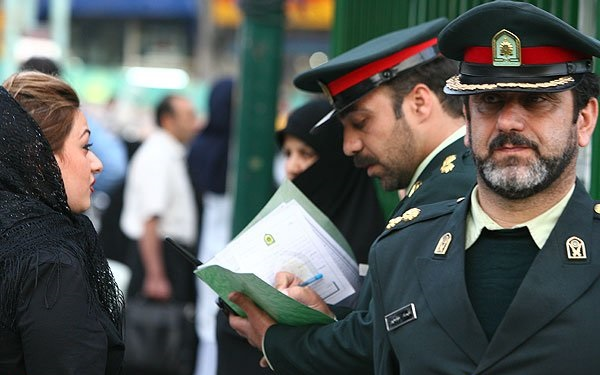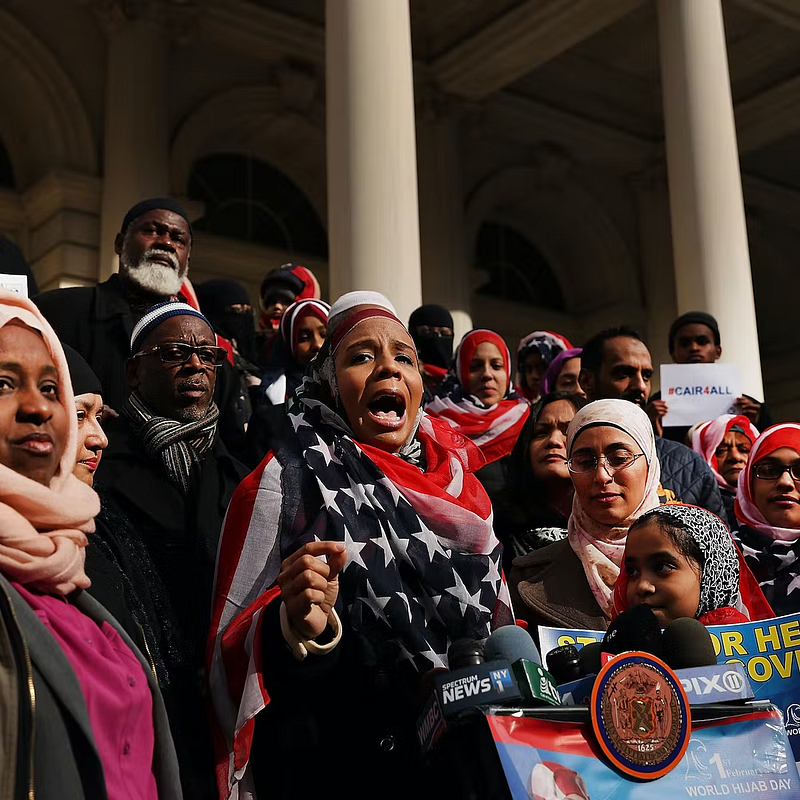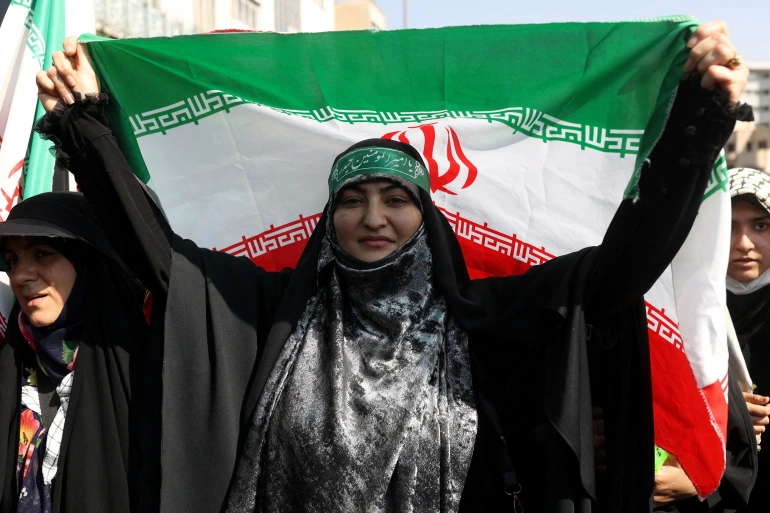A Deep Dive Into the Anti-Hijab Protests
The anti hijab protest serves to be one of the largest anti government protests that the Iranian regime has seen over the years. The…

The anti hijab protest serves to be one of the largest anti government protests that the Iranian regime has seen over the years. The protests erupted after a 22-year-old Iranian woman, Mahsa Amini, was detained and brutally beaten by the country’s “moral police” for violating the Islamic nations conservative dress code. Throughout this article, we dive into a few key aspects of how the protests erupted, who are the so called “moral police” of Iran, the double discrimination faced by women of Kurdish ethnic descent, and whether the anti-hijab protests has put the Iranian regime at its crossroads.
For the sunrise after long dark nights
For the stress and insomnia pills
For man, motherland, prosperity
For the girl who wished she was born a boy
The lyrics above were written by Iranian singer Shervin Hajipour, whose protest song “Baraye” received more than 40 million views within a day, quickly spreading across Iran in midst of one of biggest and strongest protests against the current Iranian government.
Loud chants from singers’ protest songs have shaken Iranian streets for the past weeks. The song is a tribute for the young Kurdish-Iranian woman Mahsa Amini who died in police custody, after being detained for allegedly violating Iran’s conservative hijab laws. Mahsa Amini, was arrested on September 13th 2022, for failing to fully cover her hair and wearing pants that were too tight. Only two hours after the arrest, she went into a coma and was taken to Kasra Hospital, where doctors said she had suffered a heart stroke and brain haemorrhage. It was reported Mahsa was brutally beaten by police officers while being transported to a detention centre, where she would receive training on “hijab rules”. Although the police had denied that she was mistreated and had suffered a sudden heart failure, Mahsa’s family had noted she was fit and healthy.
The violent treatment of the moral police against Mahsa had prompted a huge protest from Iranian women. Protests began after Amini’s funeral on September 17th, in her home region — Kurdistan province in the country’s northwest — but quickly spread across Iran to as many as 80 cities and swelled in the capital, Tehran. Women of the protest started cutting their hair and burning their hijabs, acts which served both as an expression of anger directed towards the “moral police” responsible for Mahsa Amini’s death, and a rejection of the compulsion of wearing a hijab. However, the acts of hijab burning and hair cutting did not merely launch a rebellion against government-imposed dress codes, but also came to symbolise broader demands for fundamental political and economic reforms.
But the regime is unwilling to understand the people’s anger, seeing as their only response since the protests have been repression. From blocking the nations internet access to unlawfully detaining and killing protestors, the Iranian government has been taking various measures to silence protestors and opposers of the regime. Five days after Mahsa Amini’s death, Hadis Najafi, a TikTok enthusiast, recorded a video message during a protest. “I hope in a few years when I look back, I will be happy that everything has changed for the better,” she reportedly said, hours before she was shot in the head. To contain the demonstrations, the authorities have even targeted women who were once stalwarts of the Revolution, including Faezeh Hashemi, a former member of parliament and the daughter of former President Hashemi Rafsanjani, who was arrested for ‘inciting riots’. Nika Shakarami, a young art student, was last heard from on September 20th, when she called a friend to say that security forces were chasing her down the street. Ten days later, when her family was summoned to retrieve her body from a detention centre in Tehran, Shakarami’s head appeared battered, her aunt told the BBC.
Who are these ‘Moral Police of Iran’?

The morality police known formally as the Gasht-e Ershad or “Guidance Patrol” was established under hardline president Mahmoud Ahmadinejad, to “spread the culture of modesty and hijab”. According to the regulation, all women above the age of puberty must wear a hijab and loose clothing in public, although the exact age is not clearly defined. In school, girls typically have to wear the hijab from the age of 7, but that does not mean they need to necessarily wear it in other public places. Iran’s social regulations stem from the state’s interpretation of Islamic Sharia law, which requires both men and women to dress modestly. However, in practice, the “morality police” primarily target women. In spite of this, many women continued to bend the rules, letting their headscarves slip onto their shoulders or wearing tight-fitting pants, especially in major cities and towns. This is due to the lack of clear guidelines or details on what types of clothing qualify as inappropriate, leaving much room for personal interpretation and sparking accusations that the “morality” enforcers arbitrarily detain women.
Needless to say, the role of the Morality Police inspired a group of young information programmers to develop an Android application that allows Iranians to avoid these officers. Gershad is an application that mainly relies on the GPS service. When a young Iranian uses a checkpoint of “Guidance Patrol,” all he/she needs to do is to report its location. As more reporters send the patrol’s location, the app would update it on the map allowing other app users to avoid passing the area and changing their route. It’s no secret that the development of Gershad was a prominent indicator of the pushback from the public towards the state’s restriction on their freedom.
The Story Behind Hijab

The hijab, to this day remains to be a; choice vs an obligation, a clothing item vs a symbol of oppression and a religious identity vs a political statement. The controversial fabric is, in fact, all the above and a bit more.
In Islam, it is widely interpreted that Muslim women are required to wear the hijab, but it should be of their own volition. According to the religion, no person or institution should force women to wear the hijab. But as Iran brands itself as a nation enshrining Islamic values in its legislation with harsh penalties, the separation between religion and politics has become blurred since the 1979 revolution.
In 1979, Iran experienced a revolution which placed Islamic religious leaders as the head of its government supported by opposition to Western interference in the country. The Iranian theocracy (a religious government) is an authoritarian regime led by a council of religious elders headed by the supreme leader. Since the revolution, women in Iran have been fighting for their rights. For the past forty years, women in Iran have not been allowed in public without covering most of their bodies and hair. If a woman is caught without a veil, she could be subject to various forms of punishment. She could be shamed in public. Men, clerics, and sometimes even other women may condemn and insult her for walking around with her hair uncovered. She could also be arrested by various agencies, one of which is the so-called anti-vice or morality police. They would pick her up, take her in, charge her and even imprison her.
Shortly after the compulsion of hijab was implemented in Iran, thousands of women took to the streets to protest against it. Some marched arm in arm with their hair flowing freely demanding that the hijab be a choice, not a requirement. In Iran, the state’s policies on enforcing women to wear a hijab is taking away their freedom of choice and accelerates the lack of bodily autonomy of Iranian women. This, though, doesn’t mean casting the choices of those other women who choose to wear the hijab is somehow wrong, or backwards. Even with the ban of hijabs in countries like France, Switzerland, and Belgium, we can say that its taking away the freedom of choice away from Muslim women. These countries try to justify the bans as a security and radicalisation problem, suggesting that it is a public safety issue and not an Islamophobic stance, however, others may feel differently. So long as hijabs are banned or enforced by a state, it shows freedom of choice and autonomy does not exist among women.
The Double Discrimination Faced By Kurdish Women in Iran

The Kurdish ethic group make up one of the Middle East’s largest ethnic groups, with a population scattered between the west and eastern Iran, northern Iraq, northern Syria, and south-eastern Turkey.
With the growing protestors against the new Iranian regime, the government has been trying to suppress the unrest with deadly force, mass arrests, and by curbing Internet access. Its response has been especially heavy in Kurdish areas of the country’s northwest, with cities militarised by the Iranian regime, and where violent confrontations between demonstrators and security forces have been reported along with night raids and the arrests of those participating in the protests.
Kurdish provinces are among the most deprived in Iran, having some of the highest unemployment rates and have limited access to basic services. The Iranian state’s economic and development policies in Kurdistan are known to be exploitative. Mainly Sunni Muslims in Shia-dominated Iran, Kurdish people represent the largest oppressed group under the Islamic Republic today and the monarchy before it. They form nearly half of political prisoners in the country despite being a small portion of the population. Activists often sentenced to many years in prison and those who take part in demonstrations receive severe penalties. Kurdish language publications and cultural activities are prohibited, and the use of Kurdish names is banned in many cases. There was even the enforcement of a discriminatory Gozinesh system ( a selection procedure that requires prospective state officials and employees to demonstrate allegiance to Islam and the Islamic Republic of Iran ) that denies Kurdish equality in employment and political participation.
The Regime at Its Crossroads
The protests, while certainly not being the first in Iran since recent years, speak volumes about the younger generation’s attitude toward the Islamic Republic and their current desperation to reverse suppressive policies of the regime. This entire movement was sparked by people of Mahsas’ generation, who have been victims of the scrutinising state and collapsing economy of the Islamic Republic. Therefore, it wouldn’t be a shock to find more repression of Iranians by the clerical regime because if the movement succeeds, the regime will lose not only the sheen but also its credibility. Iran stands at the crossroad of history. The success of Iranian women in casting the hijab aside will be an inspiration for women all over the Muslim world to raise their heads upright and force the regimes to concede their constitutional and human rights.
As people are not directly affected by the regime, it is important that every one of us does our part in amplifying the voices of Iranian women by collectively shedding light on their fight, carefully sharing researched information on social media, joining protests and calling our representatives to action. We should ensure that media outlets do not give a stage to the Iranian regime’s narrative but instead provide a platform to Iranians and human rights experts. Moreover, states should do their part in urgently investigating the corporations that facilitate censorship and restrict Iranian citizens’ access to social media. States should also immediately halt deportations of Iranian asylum seekers and impose sanctions on regime officials. Through these initiatives, we can ensure the safety of our Iranian brothers and sisters and also show our solidarity of Iranian protests against the regime.
[Written by: Harshaall Medha Naidu. Edited by: Balvin Dhaliwal]


